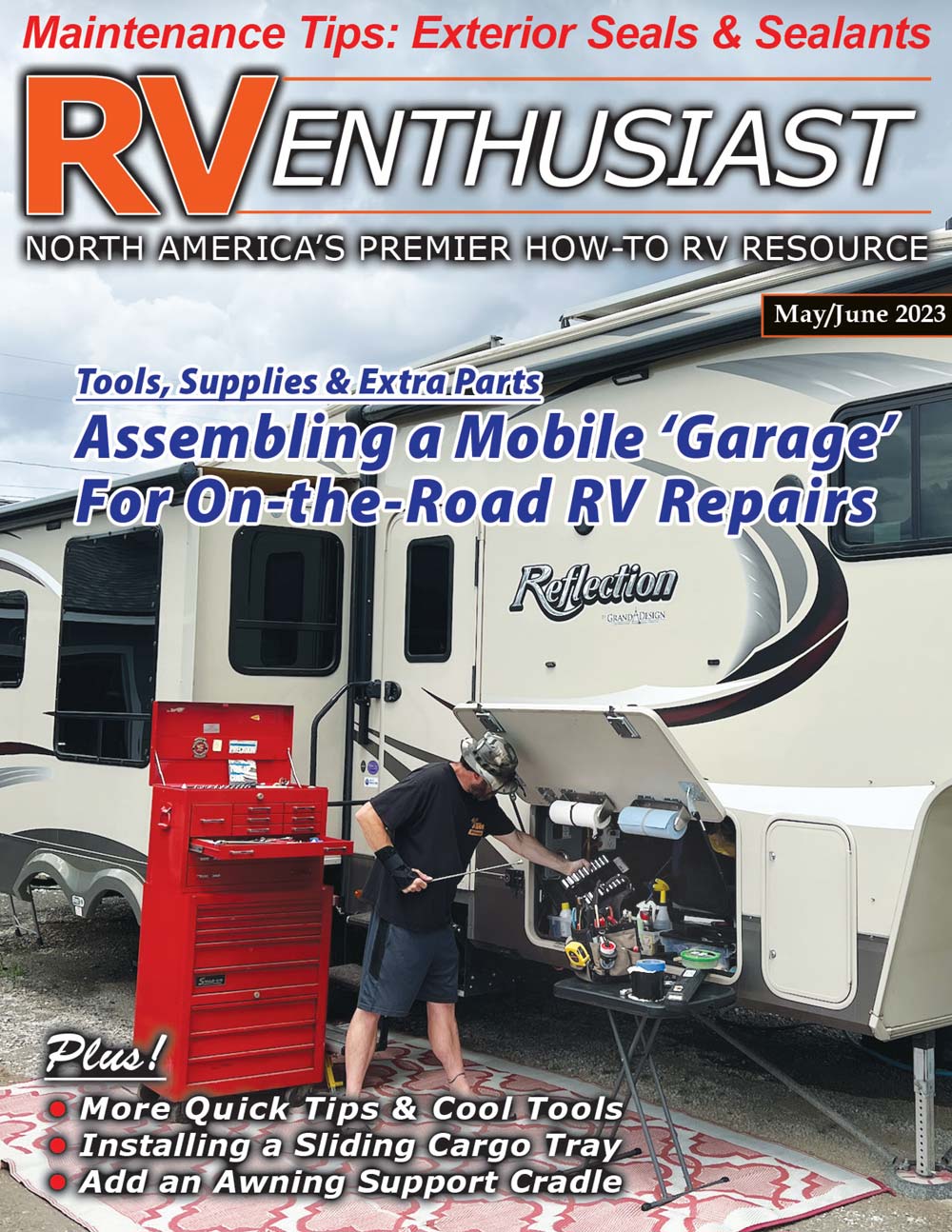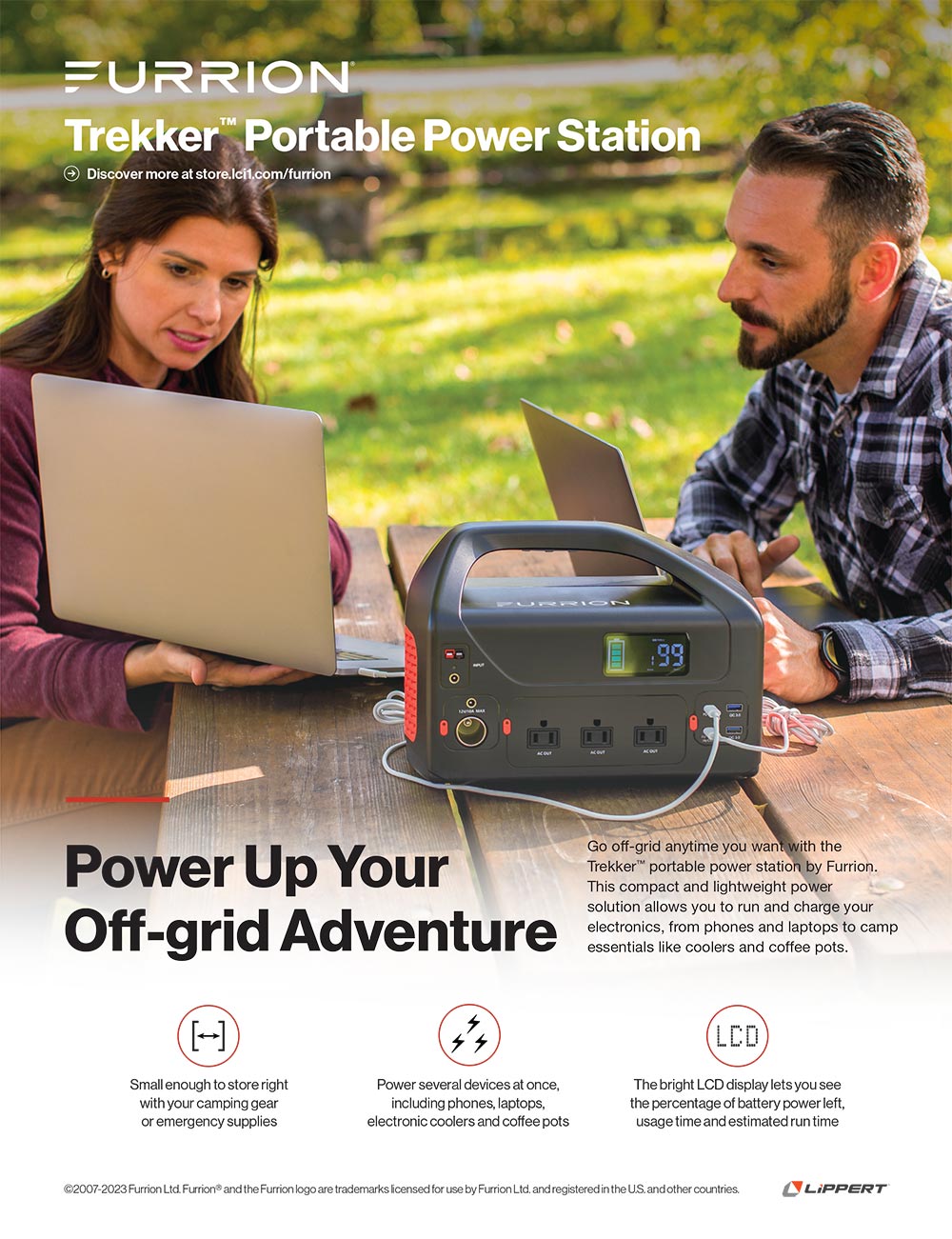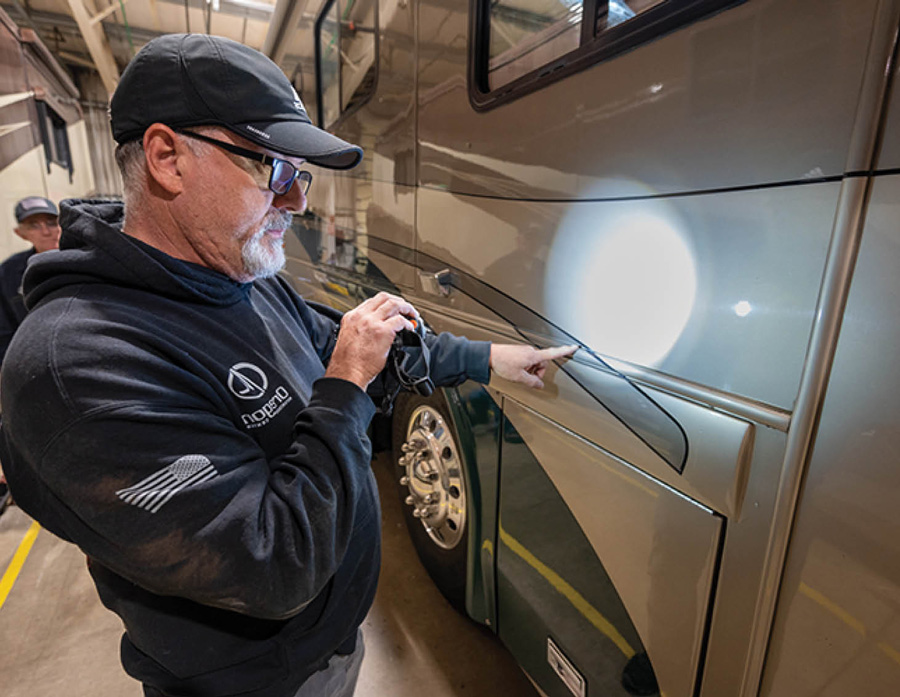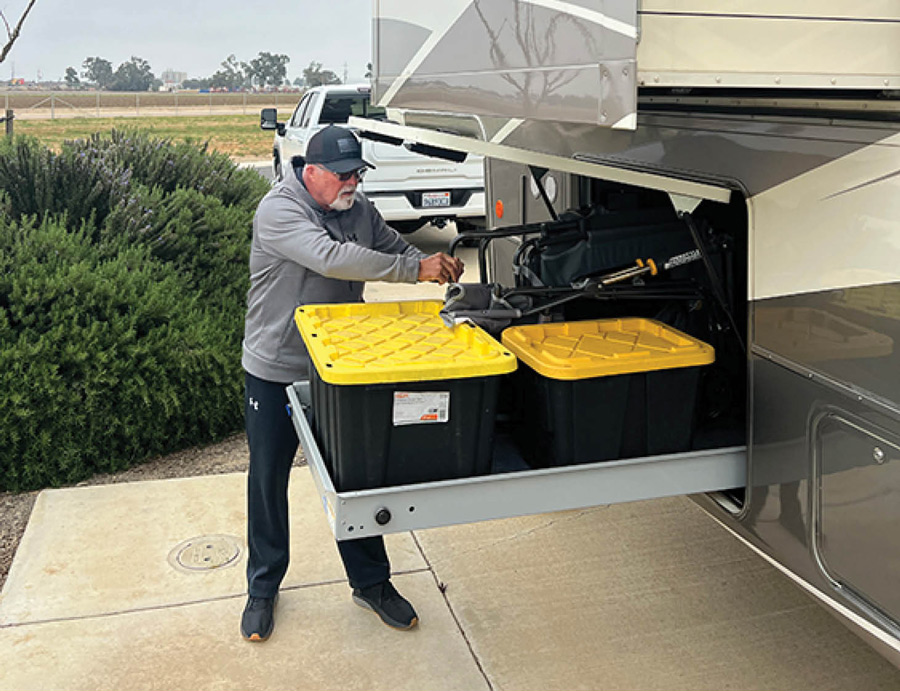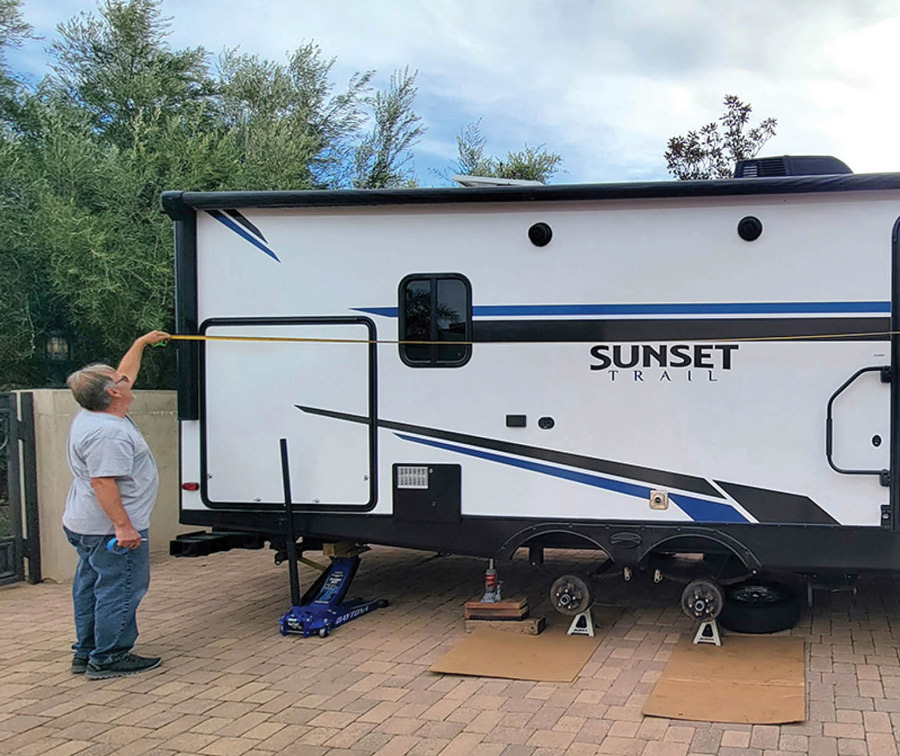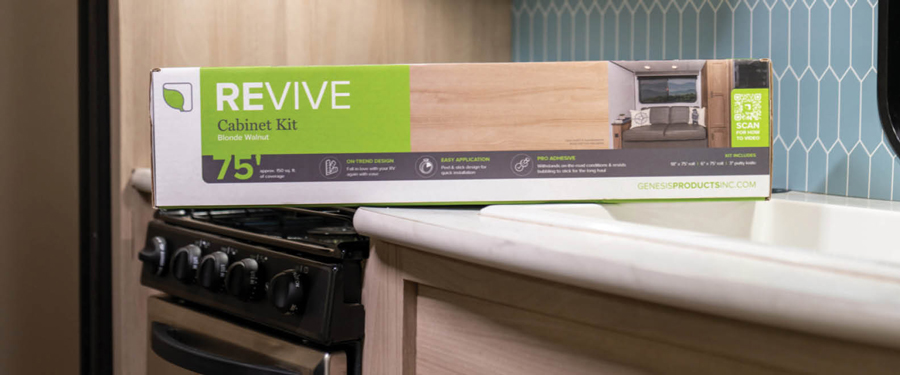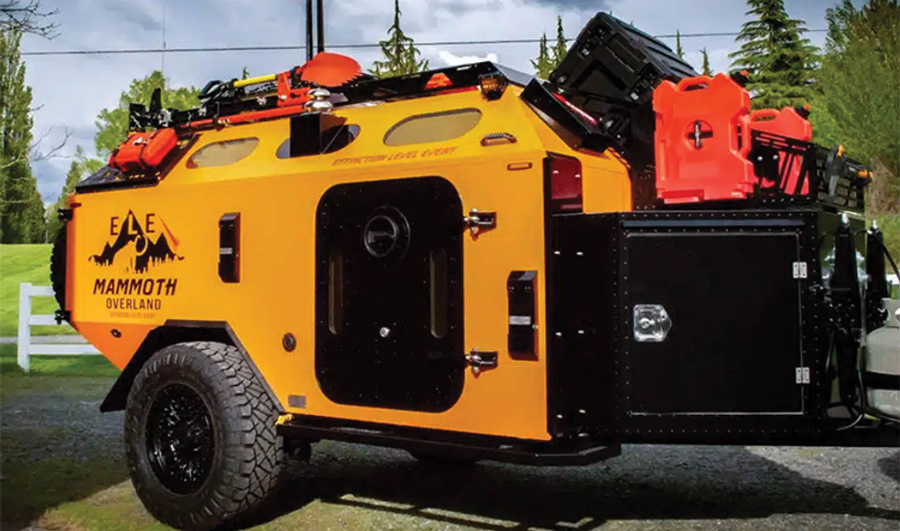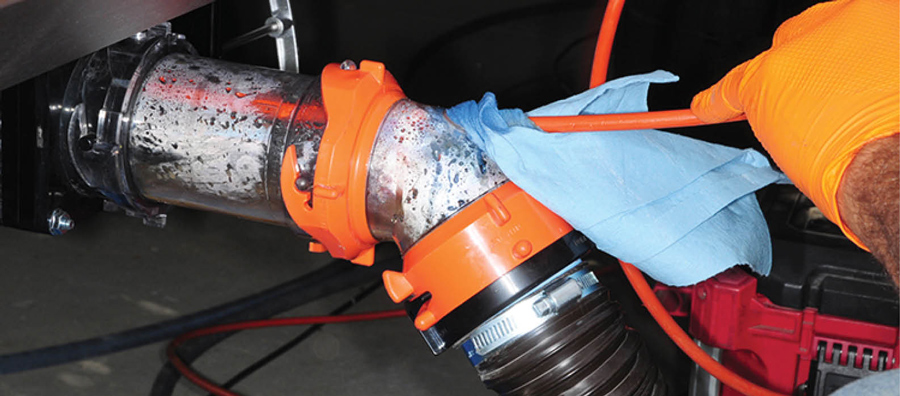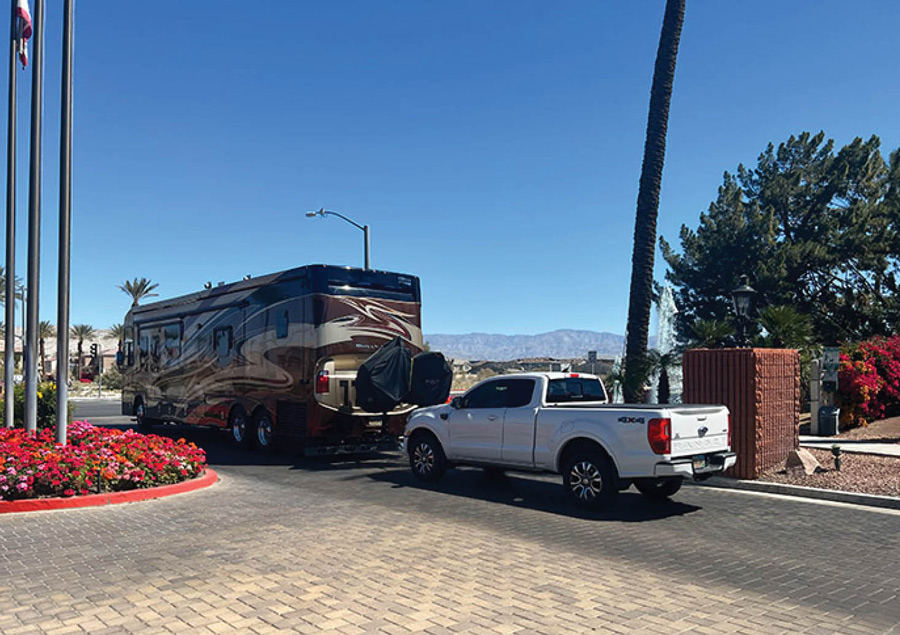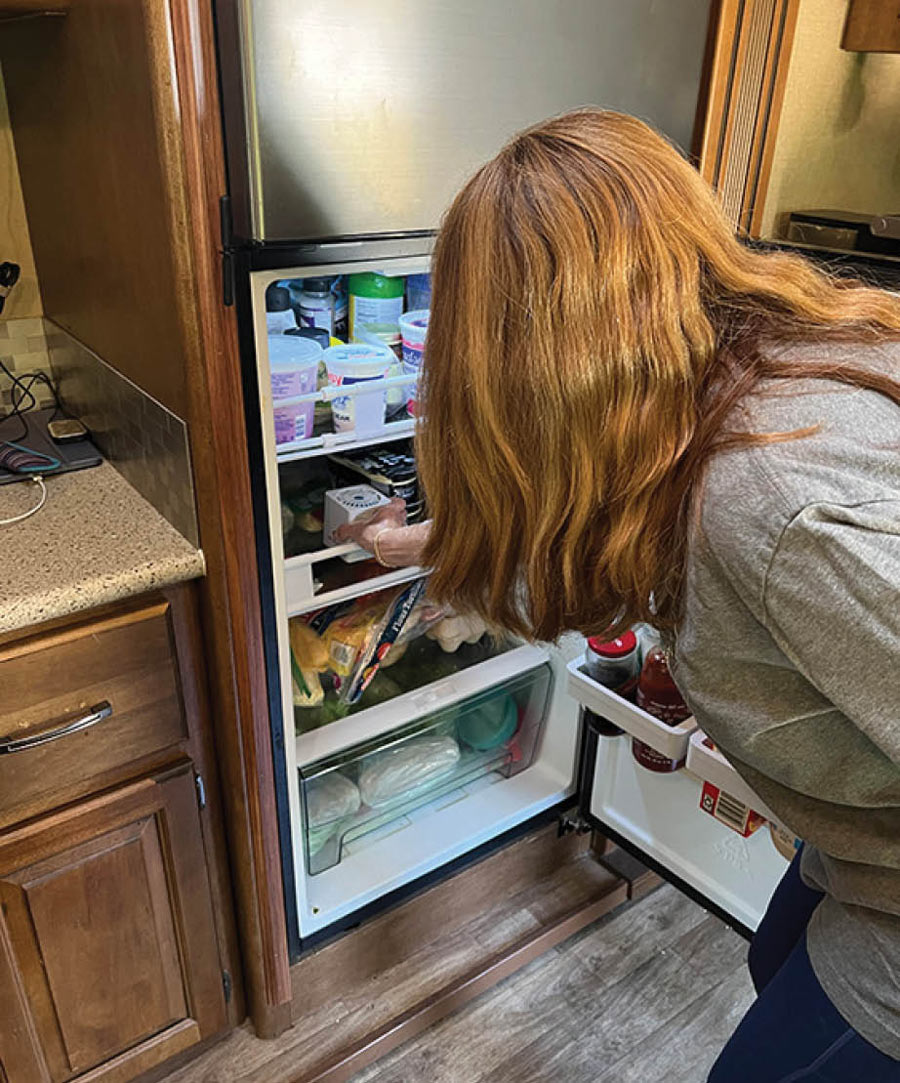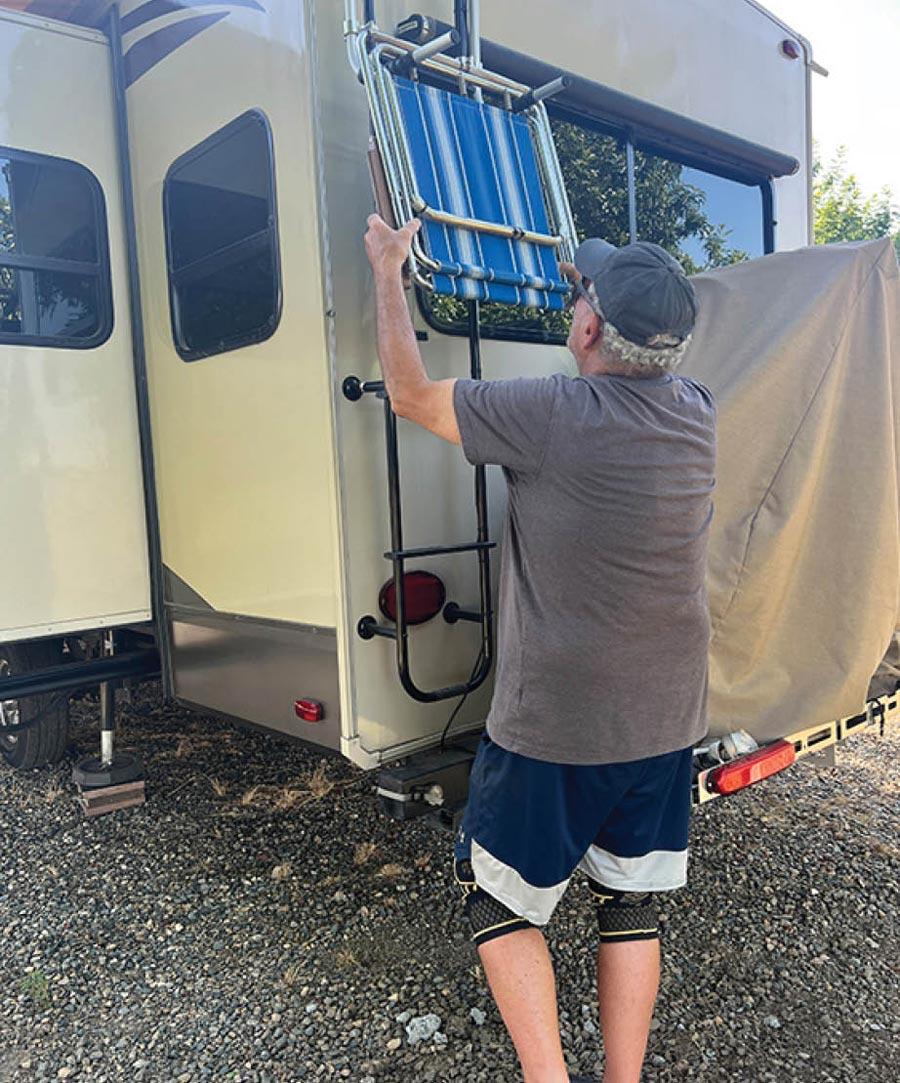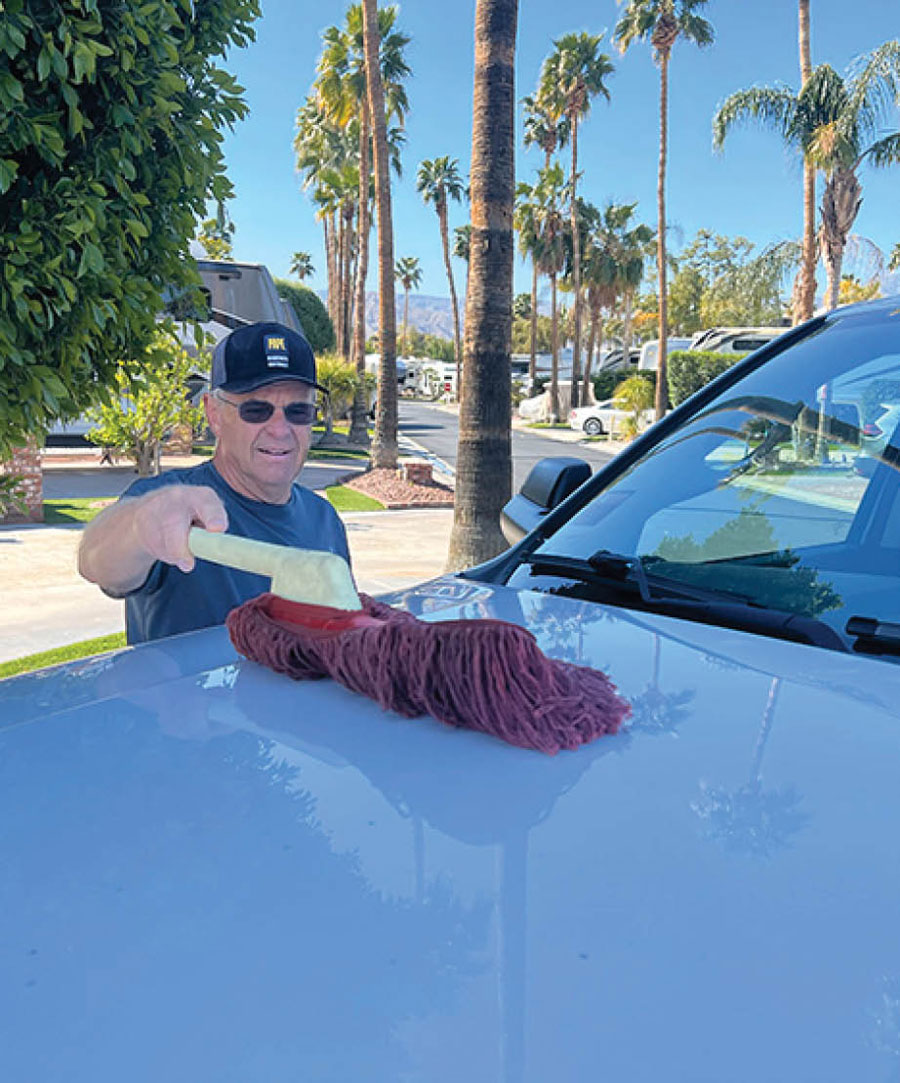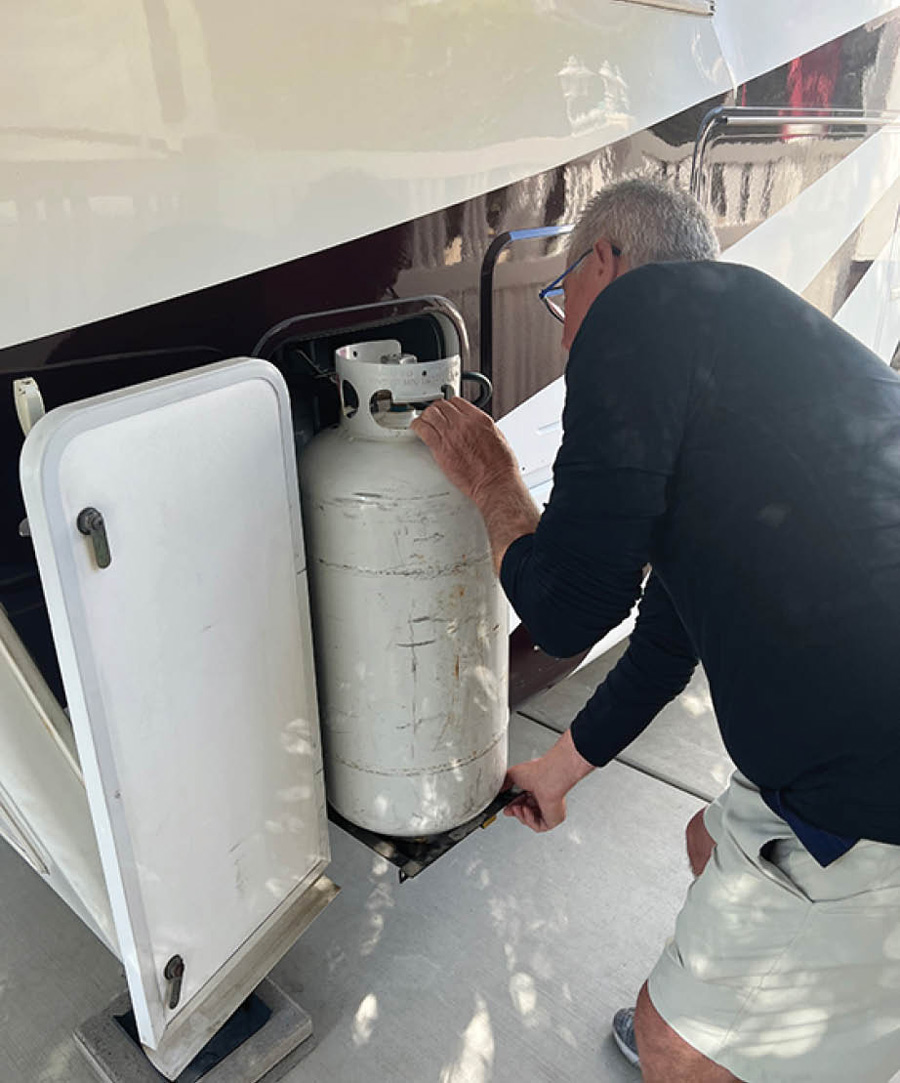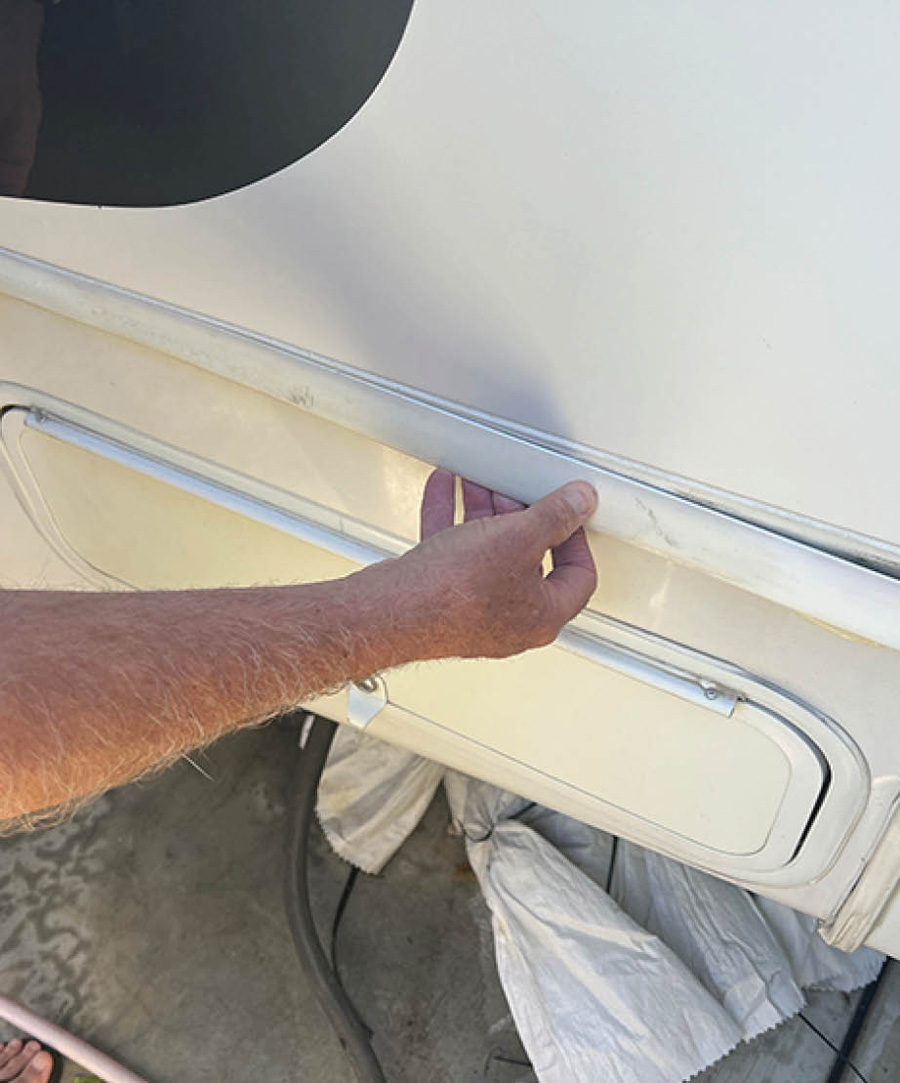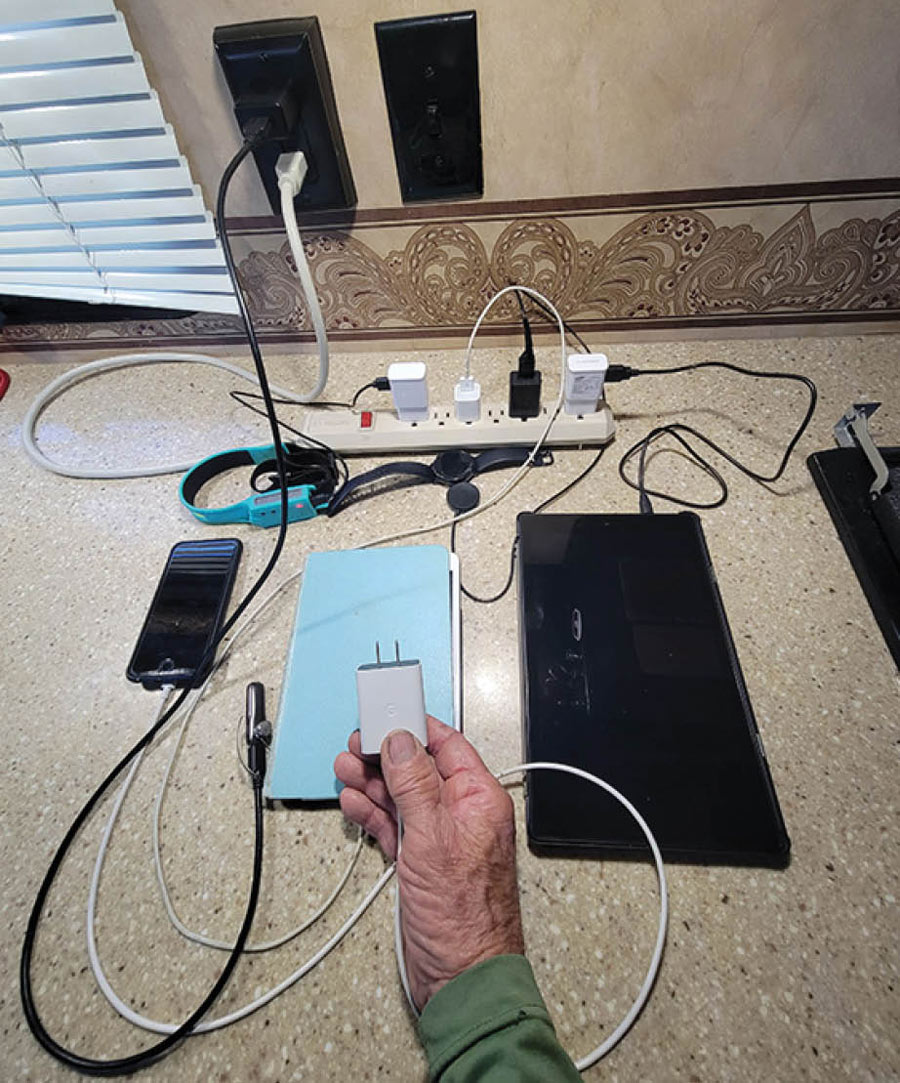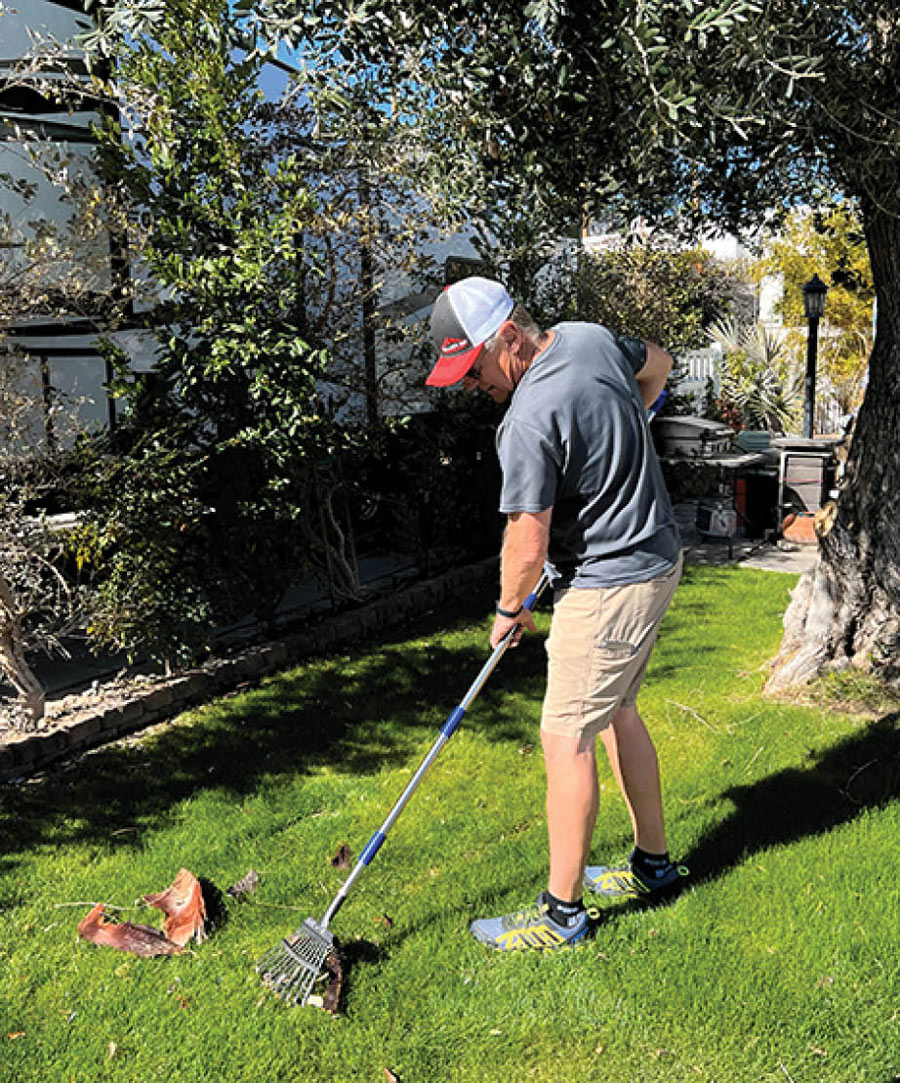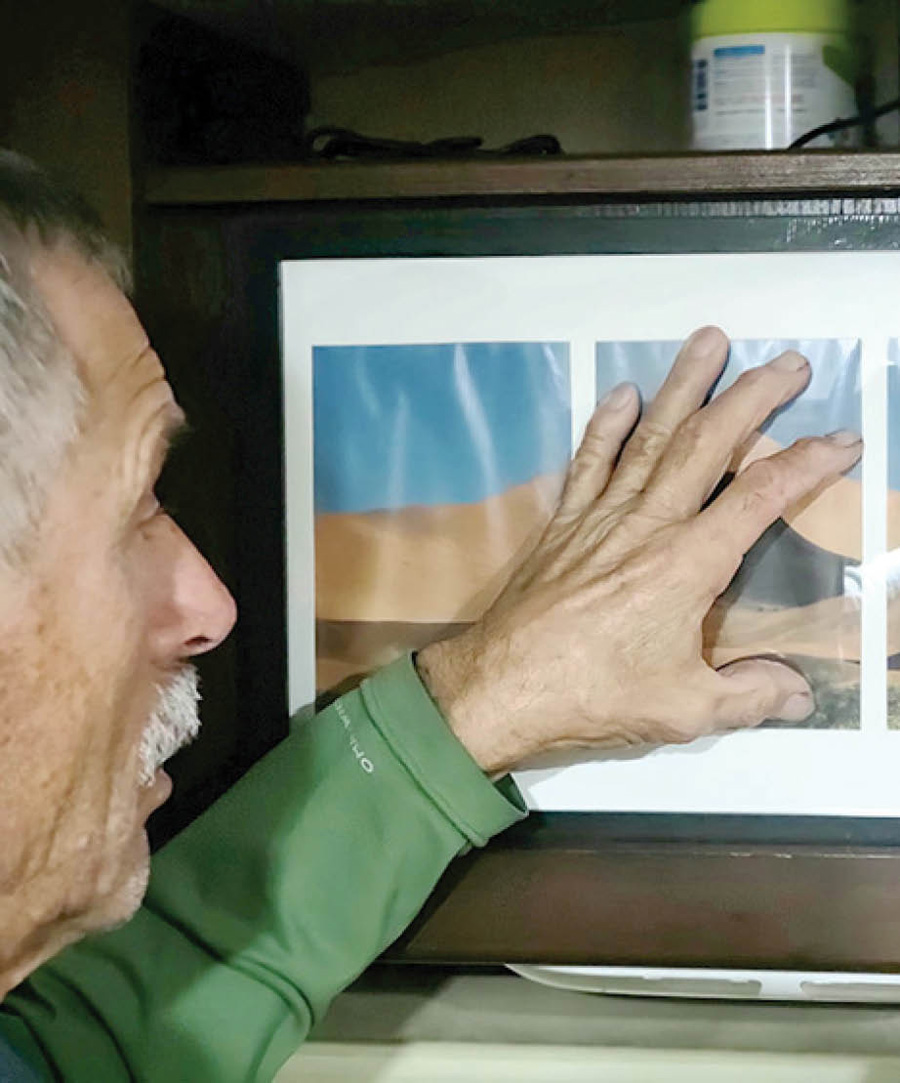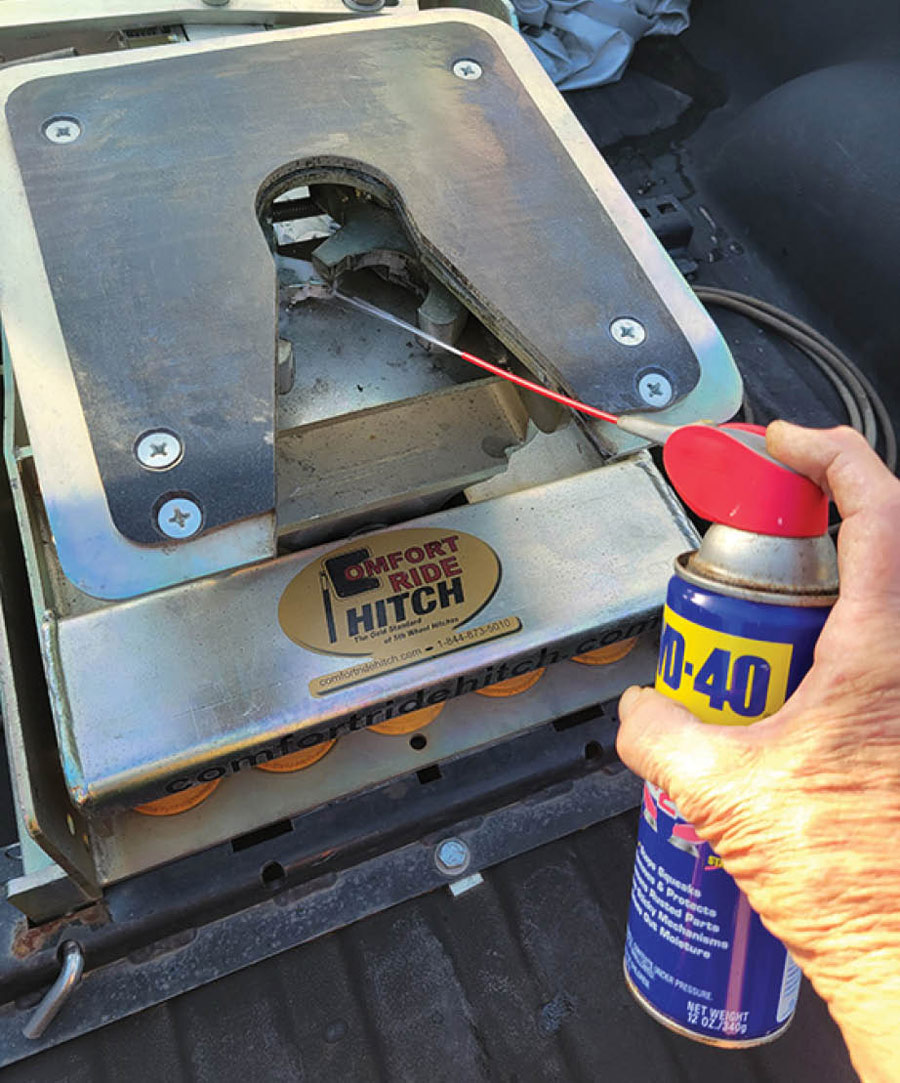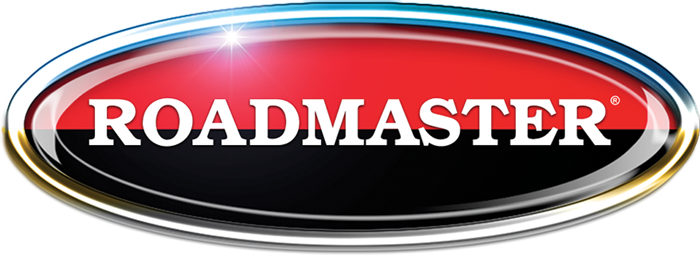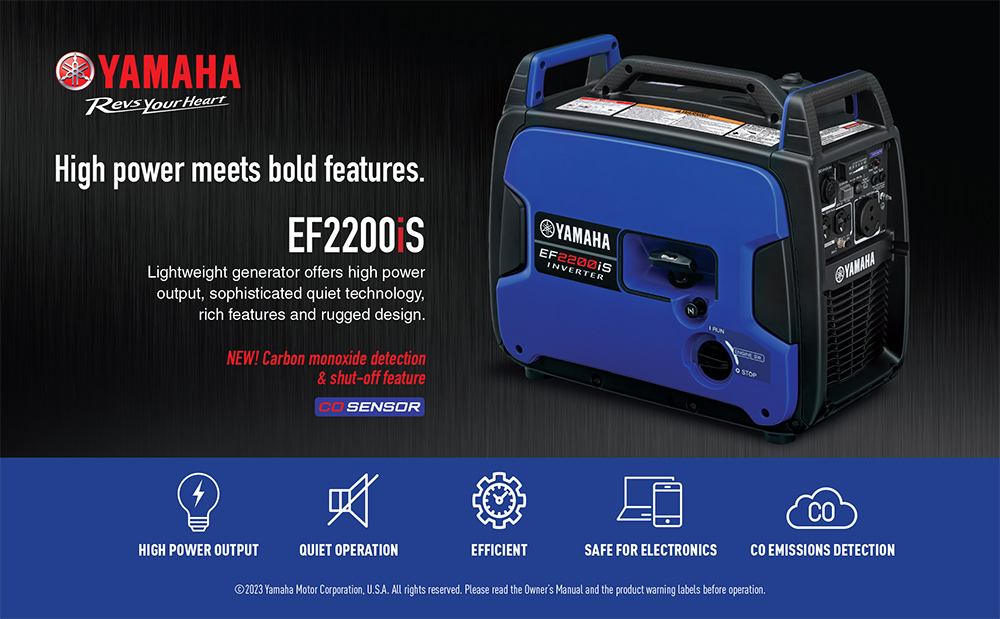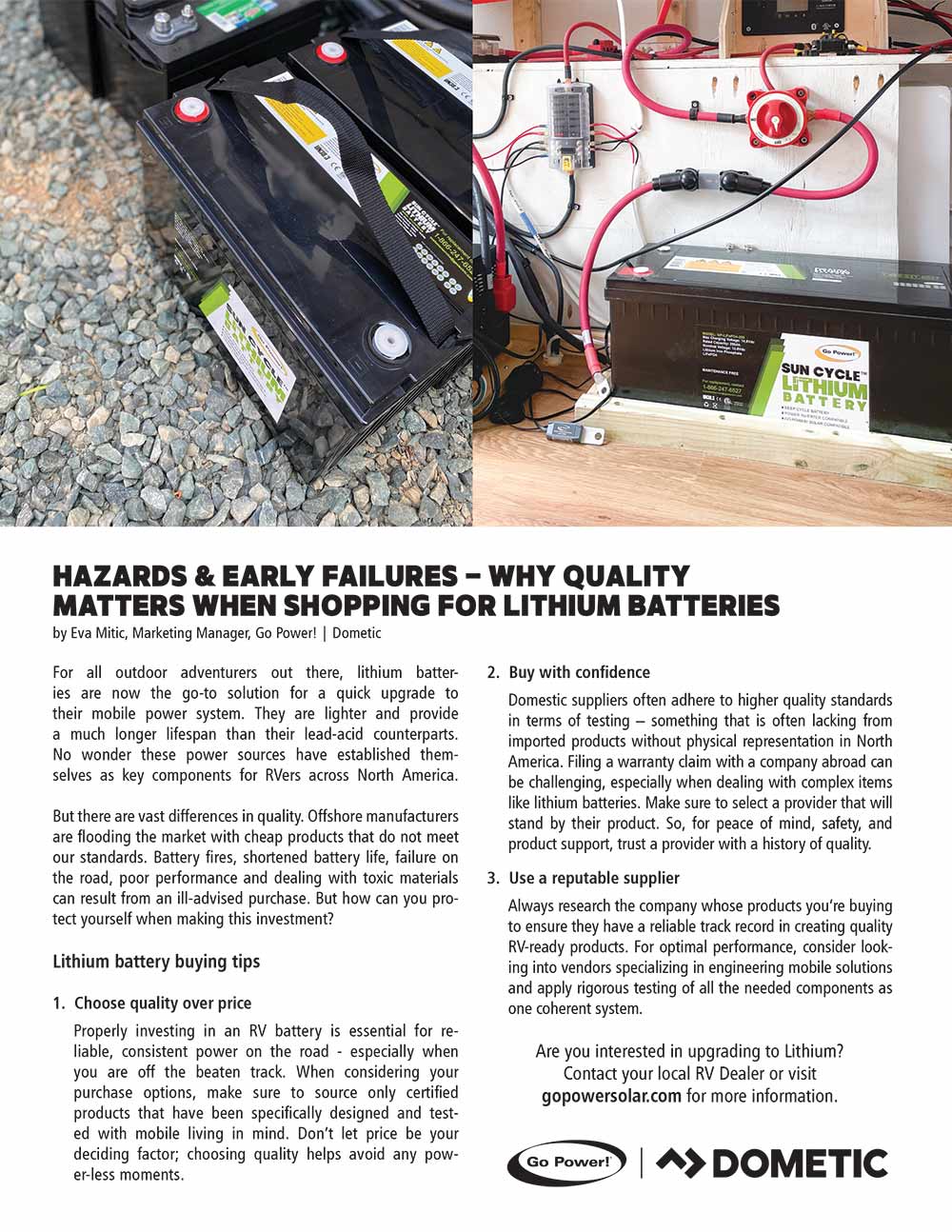Subscriber Access Only
Special Offer
Get 1 year of RV Enthusiast Magazine for just $9.99
Unlock My Offer No ThanksAlready a subscriber? Click here to access full issues.

RV Seals & Sealants
Undetected damaged seals and failing sealants can cost unsuspecting RV owners thousands of dollars in repairs related to water-intrusion damage. Technicians at Oregon Motorcoach Center walked us through many of the “tells” indicating leaks — and how to go about correcting them.
According to Murphy’s Law, things will break in the most inopportune times — so having the right tools, supplies and extra parts to make repairs while on the road is essential. You don’t have to be an ace mechanic to circumvent unexpected delays — you just need to stock the right stuff.
Ever notice how every time you need something from your exterior storage bay you have to remove a number of other items in order to find it? A mobile garage doesn’t really work without a way to keep belongins accessible — and on the road, that means having slideout trays in the storage bays.
Extra-long awnings provide great shade for any RV — but they can quickly develop sagging in the middle that can damage the roller tube. Installing a cradle support automatically rotates to carry the weight and helps to keep the awning straight and tidy when retracted.
Proprietary baseplate brackets vary in style and execution among the “Big Three” manufacturers of tow bars. It hasn’t always been possible to switch between them. Fortunately, Roadmaster has you covered if you want to use one of its tow bars on Blue Ox or Demco baseplates.


(805) 320-6909
[email protected]
EDITOR – Bruce Hampson
(574) 584-4616
[email protected]
TECHNICAL DIRECTOR
BILL GEHR
(805) 340-5015
[email protected]
ART DIRECTOR – MIKE ACCUARDI
[email protected]
26362 Douglas ave., Elkhart, in 46514
 AFFILIATE NOTICE: RVE Media Group LLC provides links to vendors and products, such as an Amazon Associates account, for informational purposes, but that may provide a commission if you purchase from that link. We often label these links with language that provides transparency if the destination is an advertiser, affiliate, or partner. Products are often provided to RVE at little/no cost for editorial testing purposes by vendors/suppliers. Under no circumstances does this affect the results of the test or install as published in RV Enthusiast. Sponsored content is identified as such directly on the content.
AFFILIATE NOTICE: RVE Media Group LLC provides links to vendors and products, such as an Amazon Associates account, for informational purposes, but that may provide a commission if you purchase from that link. We often label these links with language that provides transparency if the destination is an advertiser, affiliate, or partner. Products are often provided to RVE at little/no cost for editorial testing purposes by vendors/suppliers. Under no circumstances does this affect the results of the test or install as published in RV Enthusiast. Sponsored content is identified as such directly on the content.
PRIVACY POLICY: Our complete privacy policy can be found at https://rventhusiast.com/privacy-policy/

+
Anti-Sway Bars

+
Anti-Sway Bars
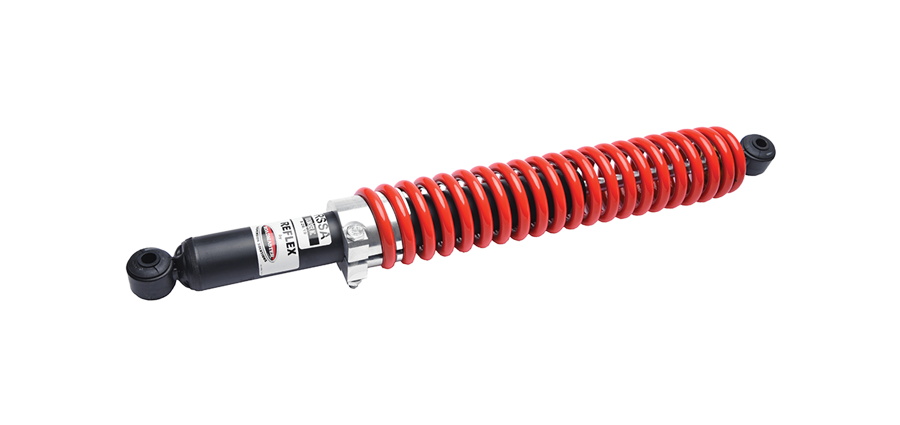
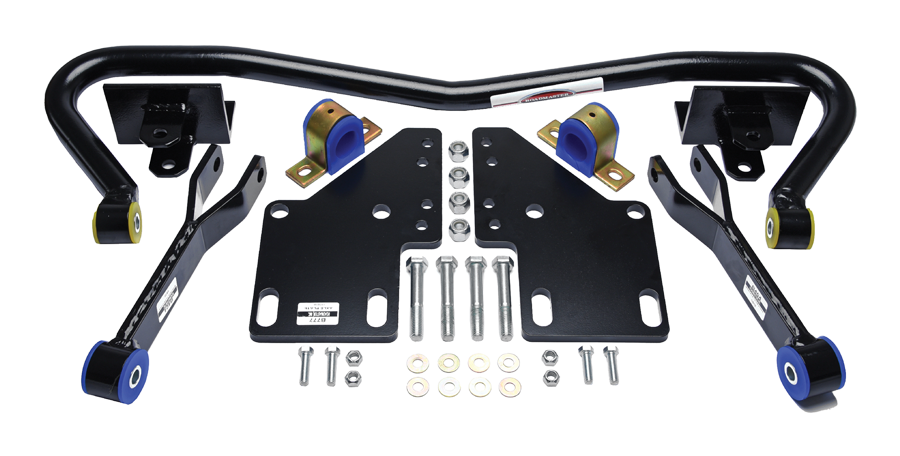
Reduces driver fatigue, increases driver confidence.
Improves handling, decreases wander.
More control in evasive maneuvers or tire blow-outs.



and Find Your Fit!
That really underscores the RV lifestyle. Granted, manufacturers probably depended upon my generation’s ability to spin wrenches — yup, I’m an “older” fart — and have a penchant for fixing things instead of just complaining about them. Not a criticism, really, but an honest look at things that weren’t always built to the highest levels “back in the day.”Younger campers, on the other hand, grew up with products that benefitted from cutting-edge technology — and worked as they should. Again, this isn’t a grievance, just an honest view of the changing manufacturing landscape and how it’s impacted peoples’ opinions of things.
That said, there remains a huge group of RVers that just aren’t satisfied with not only the quality of their RV but it’s aesthetics. Recreational vehicles tend to be dressed out in non-offensive tones intended to appeal to the widest possibleaudience. Fortunately, most major RV manufacturers employ interior designers who pay attention to what’s happening in the home market and adapt evolving trends to these homes on wheels. Granted, it’s a slow process, but the needle is moving.
News & Notes
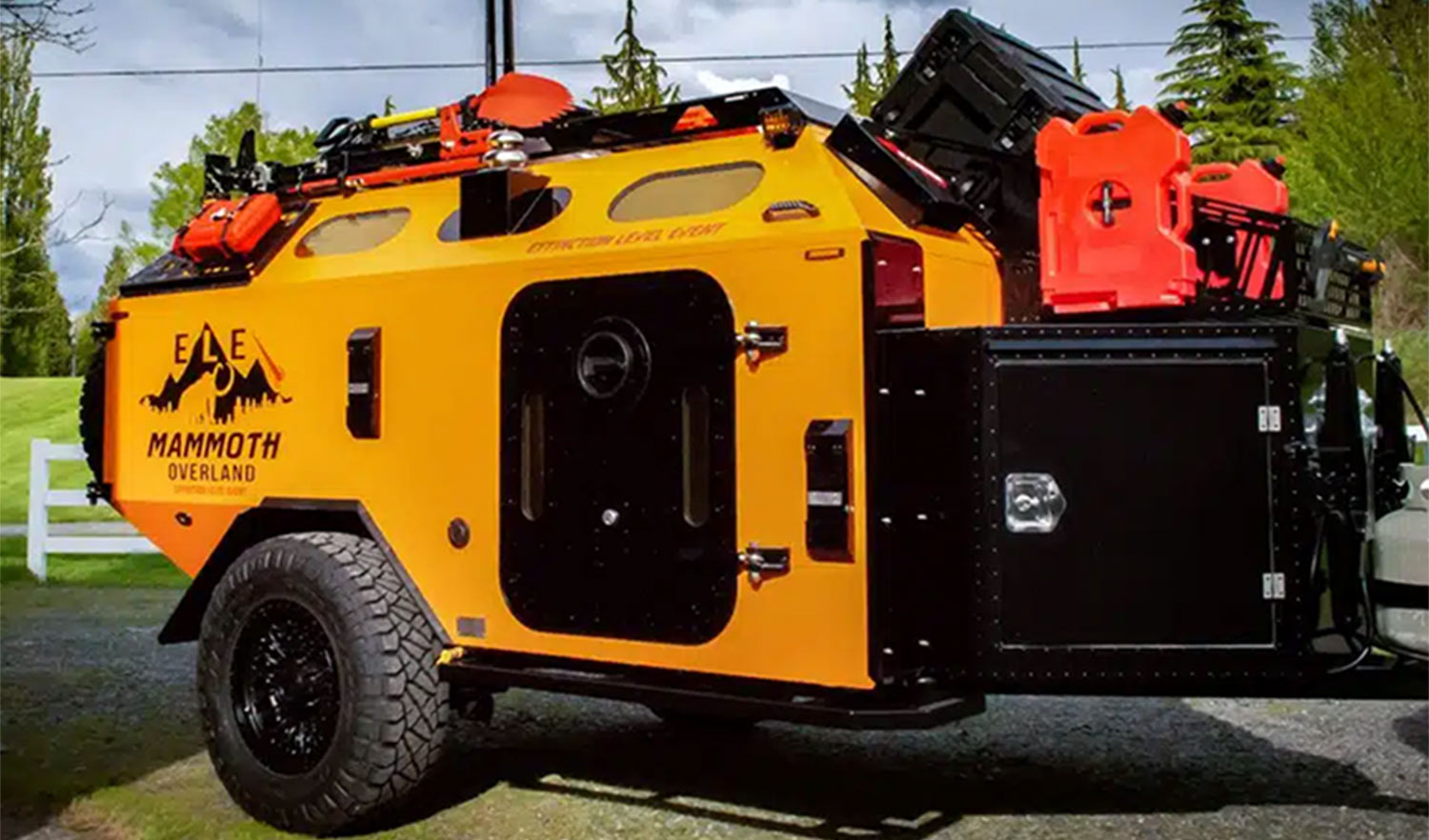
Built to aircraft standards, ELE features an onboard air purification system, water filtration system, gas-powered generator, and solar-power systems, enabling overlanders to explore fearlessly — and adds features normally reserved for armored vehicles and safe rooms to the brand’s already rugged line of off-road trailers.
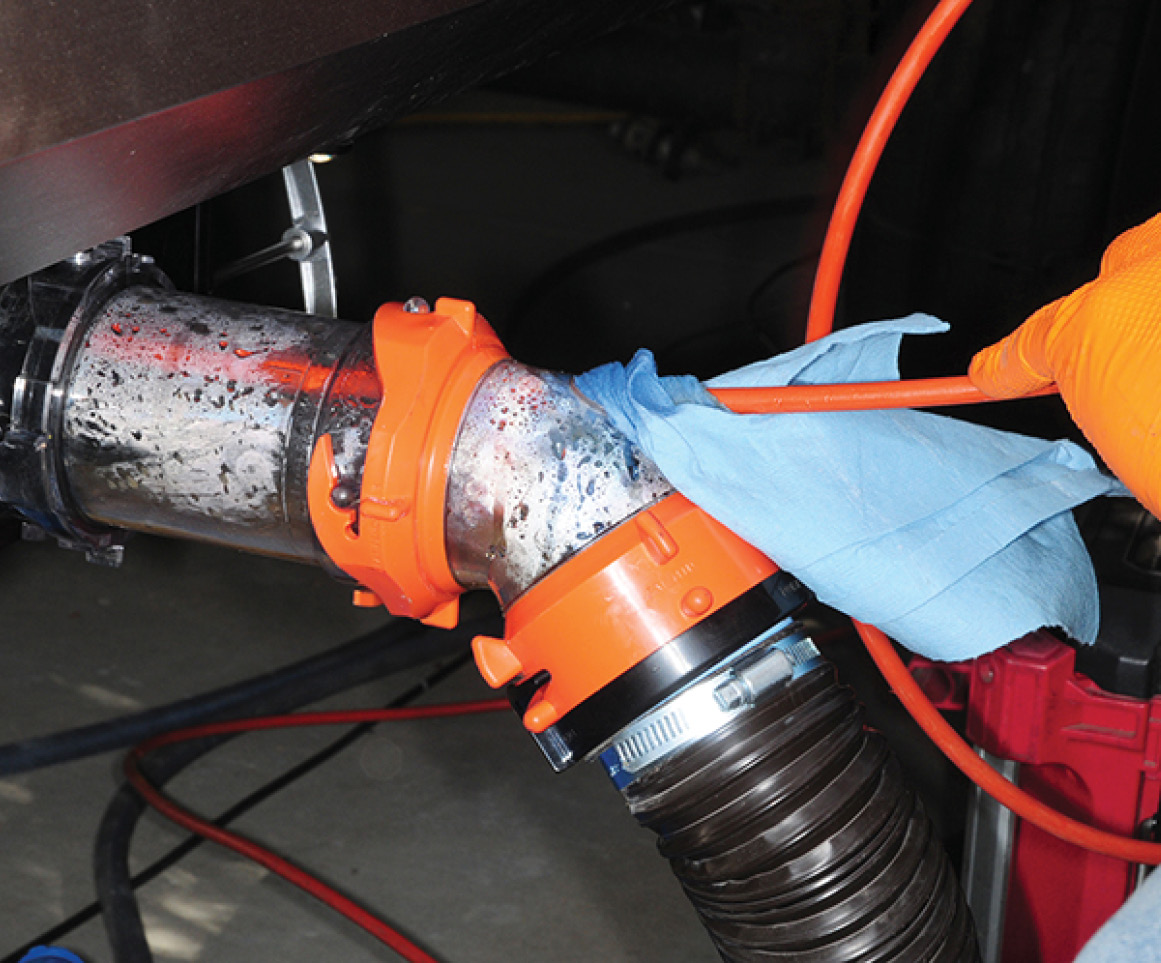
My wife was helping me dump the blackwater holding tank in our motorhome a while back and since we had no way to hook up a water hose to rinse the tank, we were using a 5-gallon jug with a good size lid. Unfortunately, she was holding it too close to the toilet when the lid came off and dropped into the holding tank. I tried to flush it through the pipe but nothing came out; it still seemed to dump okay at that time. Several months later, this incident came back to haunt us when the dump valve was opened and no solids came out — only a little liquid. And, you guessed it: The black tank was almost full. I’ve contacted a couple of local dealers who reluctantly said they could fix the problem, but I can’t get an appointment for five months. We have several trips planned during that timeframe. Any ideas how to get out of this crappy situation?
—Rob Martinez

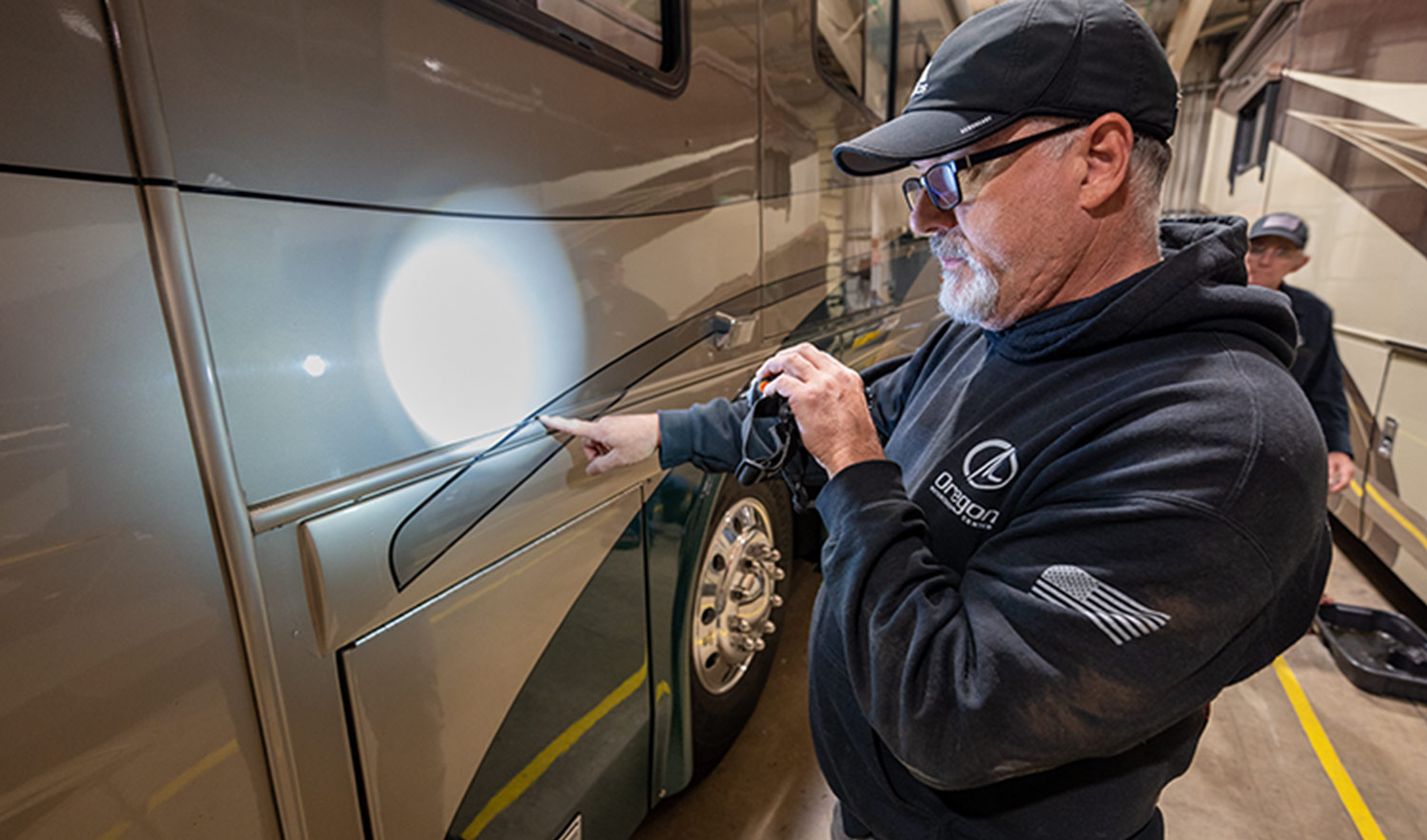
n retrospect, it was just a little twig that blew onto the roof of the living room wall slideout. It was tough enough, though, to make a small tear in the lip of the slide’s top wiper seal when the wall retracted. The tear, undetected by the luxury 45-foot motorhome’s owners, grew to more than an inch during the next couple of years as the big slide was moved in and out as the owners travelled around the country.
During that time the rip in the seal allowed water from rain, dew, melting snow and ice to slowly work its way into the slide and down to floor level — where it slowly saturated the wood subfloor of both the slideout and the coach. The first time the owners became aware of the problem was when one of them walked past the beautiful hardwood entertainment center — and the floor flexed just enough to crack a couple of tiles.

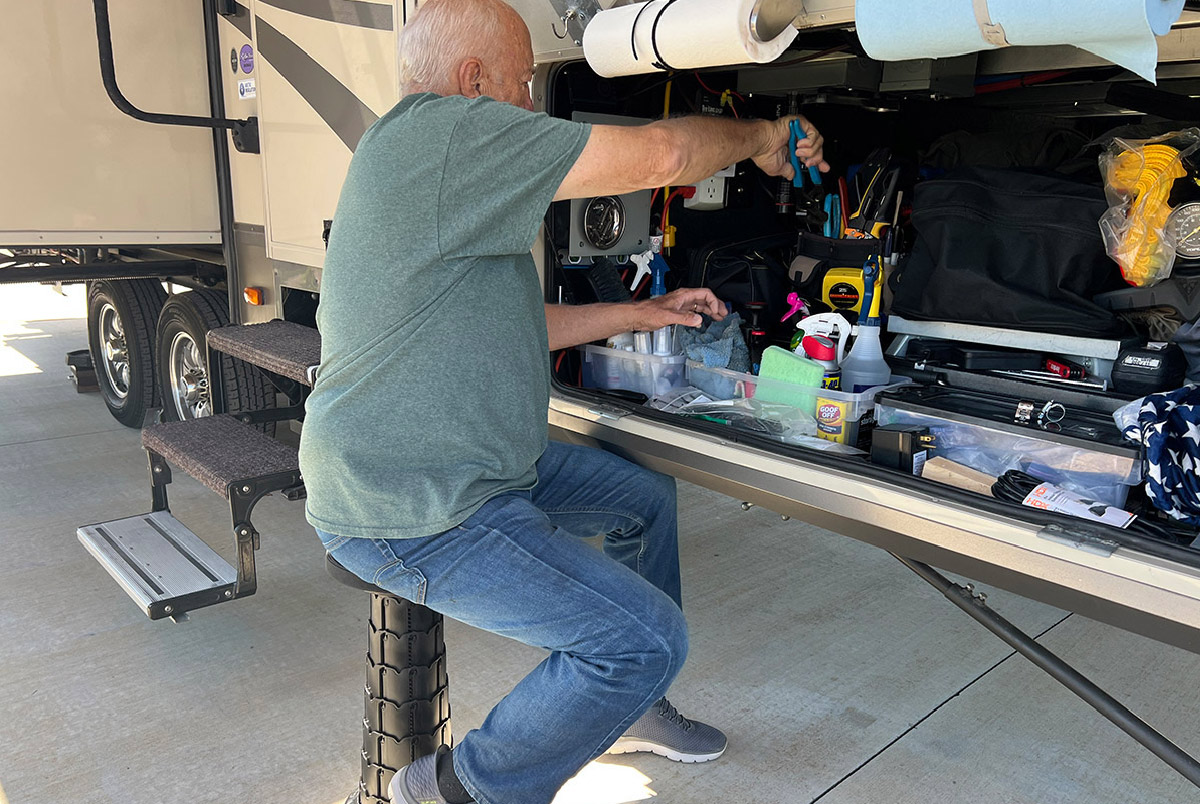
hen you’re on the road, living in an RV with multiple complex systems, you must expect the unexpected. Things will break — and becoming stranded in strange places is a real possibility. Most owners are dependent on local service centers or mobile technicians, which can be reassuring, but these days you usually have to wait in line to facilitate repairs. Armed with knowledge of how these systems work and having access to an onboard “garage” of sorts can make or break a trip.
Over the years, RV Enthusiast Technical Director Bill Gehr and I have accumulated an arsenal of tools, parts and supplies to give us independence when repairs are needed on the road. Admittedly, we’re both tool junkies, but having the right equipment on hand has saved our bacon countless times. And being prepared also applies to general maintenance and repairs before and after any trip.

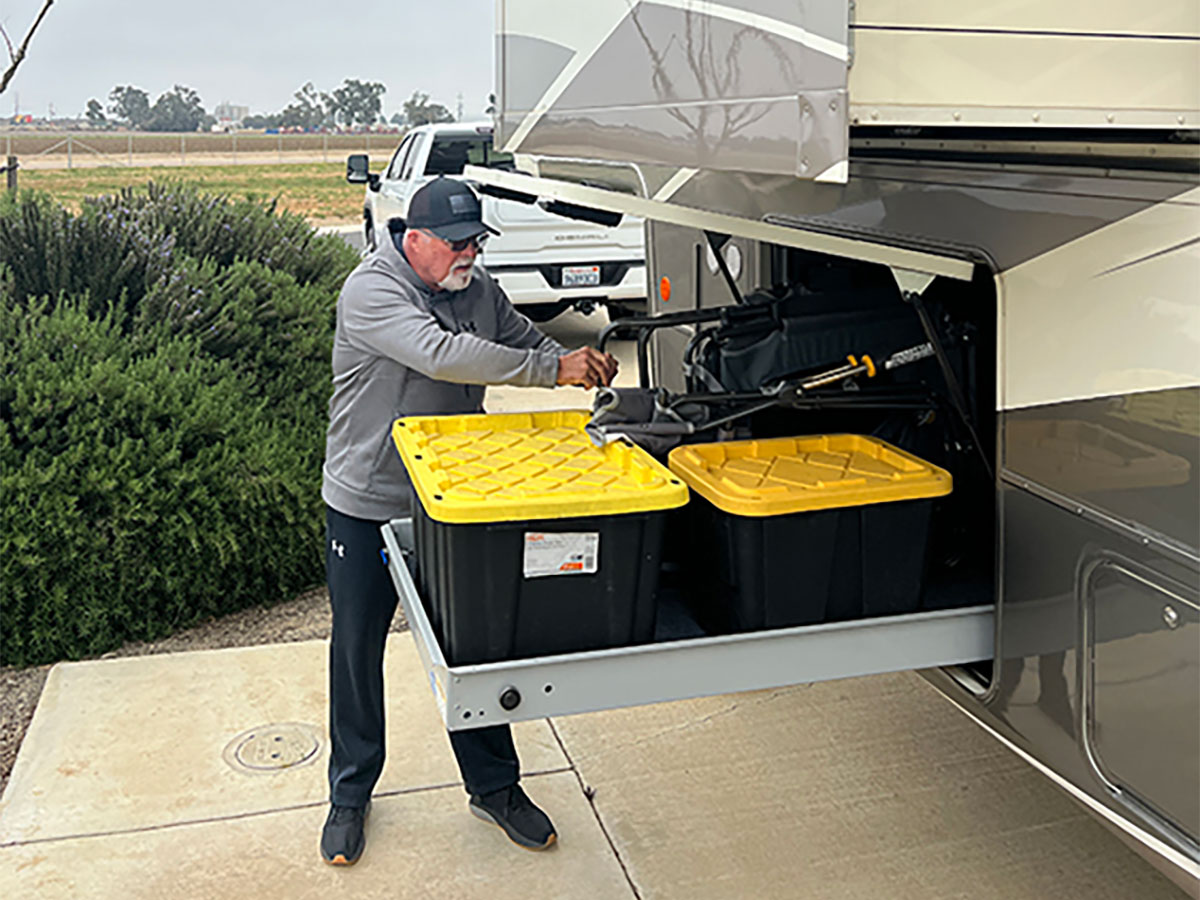
t’s no secret that RVs — whether we’re talking motorhomes or towables — have increased substantially in size through the years. All that floor space, however, disguises what lies below it: a commensurate expansion of basement storage.
And there’s the rub.
No, we’re not saying the RV industry should go back to the days before the original Fleetwood Bounder, credited as the first RV to offer basement storage way back in the ’80s. Today, even relatively low-cost travel trailers oftentimes offer owners a wealth of exterior storage opportunities — including pass-through storage running the full width of the RV. But unless you can somehow cram a kayak in it, pass-through compartments — and their sometimes only slightly smaller storage bay cousins — can be as aggravating as they are necessary.
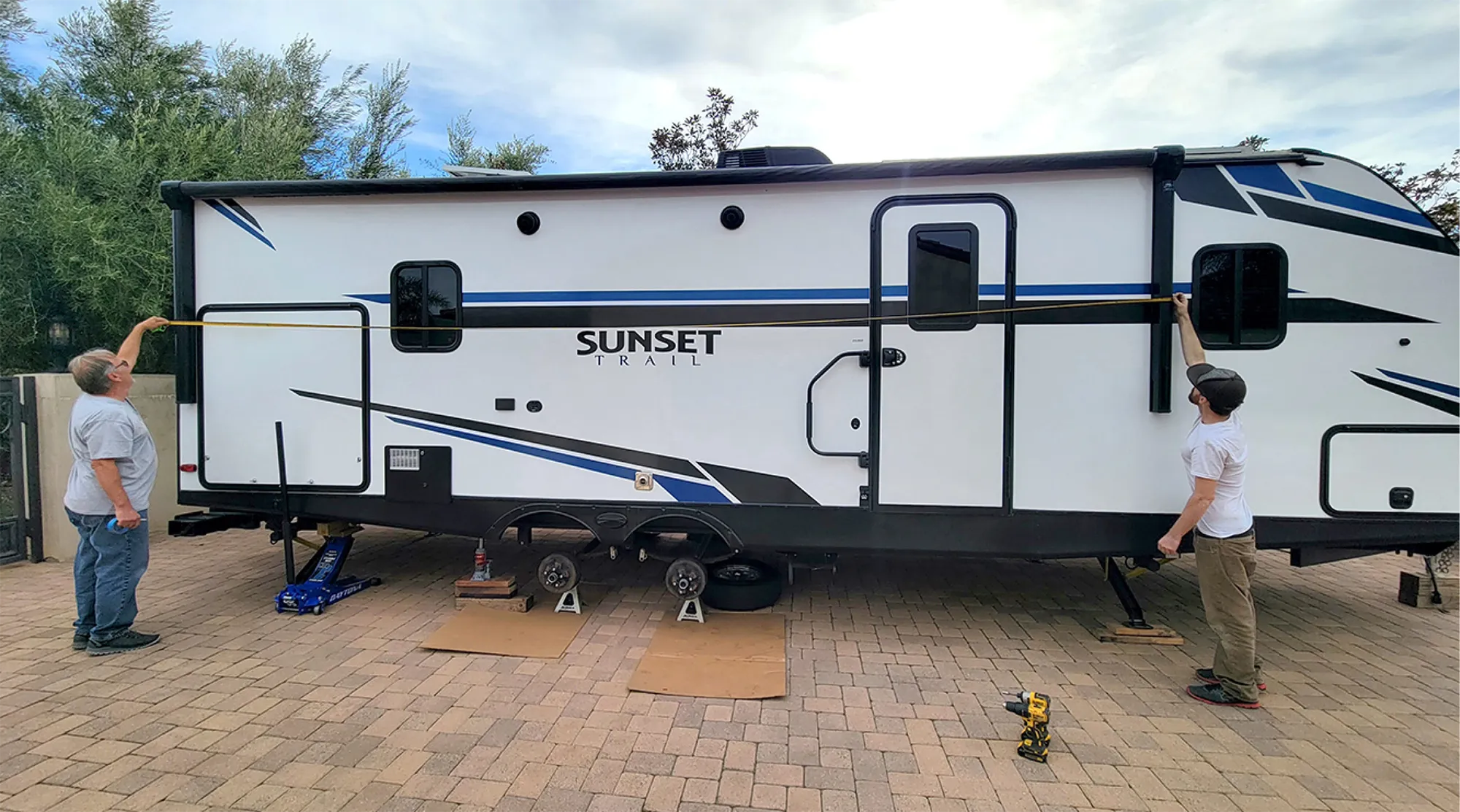



ust about all RVs are equipped with patio awnings these days — and for good reason: No one wants to bake in the sun and a patio awning provides the requisite shade. Most owners want as big an awning as possible — and that’s the rub. While a big, expansive awning is nice to have, in most cases longer models sag in the middle when retracted. Over time, the bow in the roller tube can become more pronounced. We’ve all seen rolled-up awnings bouncing up and down when an RV is traveling down the road, and the added stress usually leads to damage, impeding the operation of the awning.
More to the point, it becomes unsightly.
Taking preemptive measures can protect your investment, and the best way to mitigate sagging is to install a cradle support in the middle of the roller tube. Fortunately, it’s easy to do.

ooner or later, just about everyone who owns an RV has come to grips with the need to maintain, repair or replace something. It just goes with the territory. Heck, that’s why RV Enthusiast exists — to help guide do-it-yourself readers through the processes involved with easy-to-follow step-by-step methods.
But not everything needs to be fixed. Sometimes, what you’re really looking for are ideas to make these space-challenged homes on wheels more user-friendly. Who, for example, couldn’t use a bit more space — or add needed “tools” that take less space?

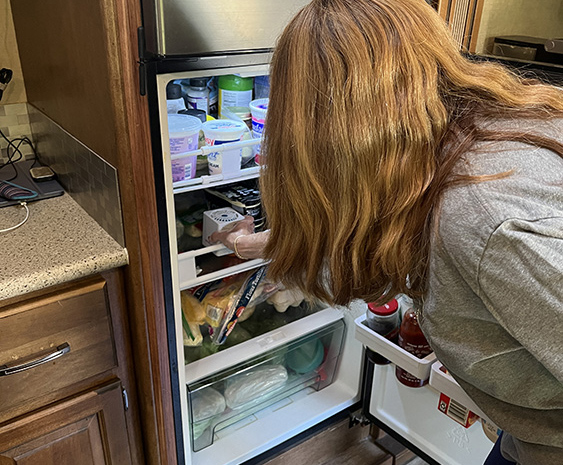
lmost two years ago, I switched out the factory LP-gas/120-volt AC refrigerator in my Grand Design Reflection fifth wheel for an Everchill 12-volt DC compressor model. The replacement provided freedom from using propane — and added a whopping three additional cubic feet of storage capability in the same dedicated space. It works beautifully, and storing additional foodstuffs reduced runs to the market.
That said, while the inside temperature never budged more than 1-2 degrees F during 24/7 full-time service, there were a few cold spots in the back of the refrigerator that tended to freeze food, even in 100-degree F weather with the temperature button never set past the second of five levels.


Vers who frequent campgrounds or primitive areas without a dump station are well aware of the benefits of carrying a tote that allows for emptying some of the waste/gray water in the holding tanks. It can be a dirty job, but using one of the more modern products, like Thetford’s SmartTote2 LX (thetford.com), makes the job more palatable. Obviously, it not something that most are owners are comfortable storing in an exterior compartment, so hanging the tote on the ladder leading to the RVs rooftop makes the most sense.
When we carry our Thetford tote, it’s mounted using the company’s Tote Storage System Ladder Mount. This product works flawlessly, albeit we still have to hoist the tote on the ladder mount. Granted, it can be cumbersome, but it’s worth the effort to add extra days to our camping. We simply empty some of the holding-tank contents into the tote and haul it to the closest dump station.

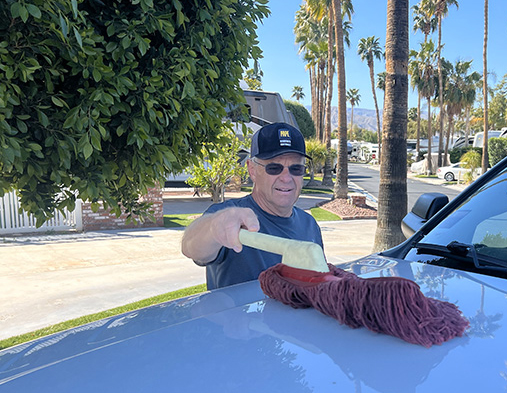
eeping a tow vehicle or dinghy clean can be a never-ending battle. Wash the truck one day and by the time you reach your destination, it’s dirty again. So, out comes the bucket and microfiber towels and after an hour or two, the paint is shiny clean. But what if the only “blemish” is dust? Car buffs who display their prized vehicles at shows always have mega-expensive paint jobs and they know that keeping the dust off is important. Most turn to a California Car Duster (calcarduster.com) for quick touch ups. It works well when removing the thin layer of dust on your tow or dinghy vehicle between trips, and can work well on an RV, too, although there’s way more area to cover.

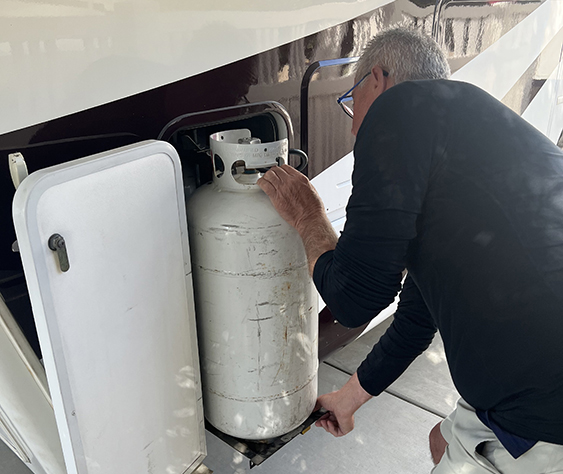
ropane is a vital source of energy for just about all travel trailers and fifth wheels — and most motorhomes — and when you run out unexpectedly, you’ll have to do without until you can get to a re-filling station.
If you have a motorhome, you can check propane level on a remote monitor or, at the very least, via a gauge built into the tank. Unfortunately, most towables have no such gauge, leaving owners to monitor levels using unconventional methods like pouring hot water over the cylinder and running a hand down the side looking for a cold spot. Granted, some cylinders do have gauges — but most are not very accurate.

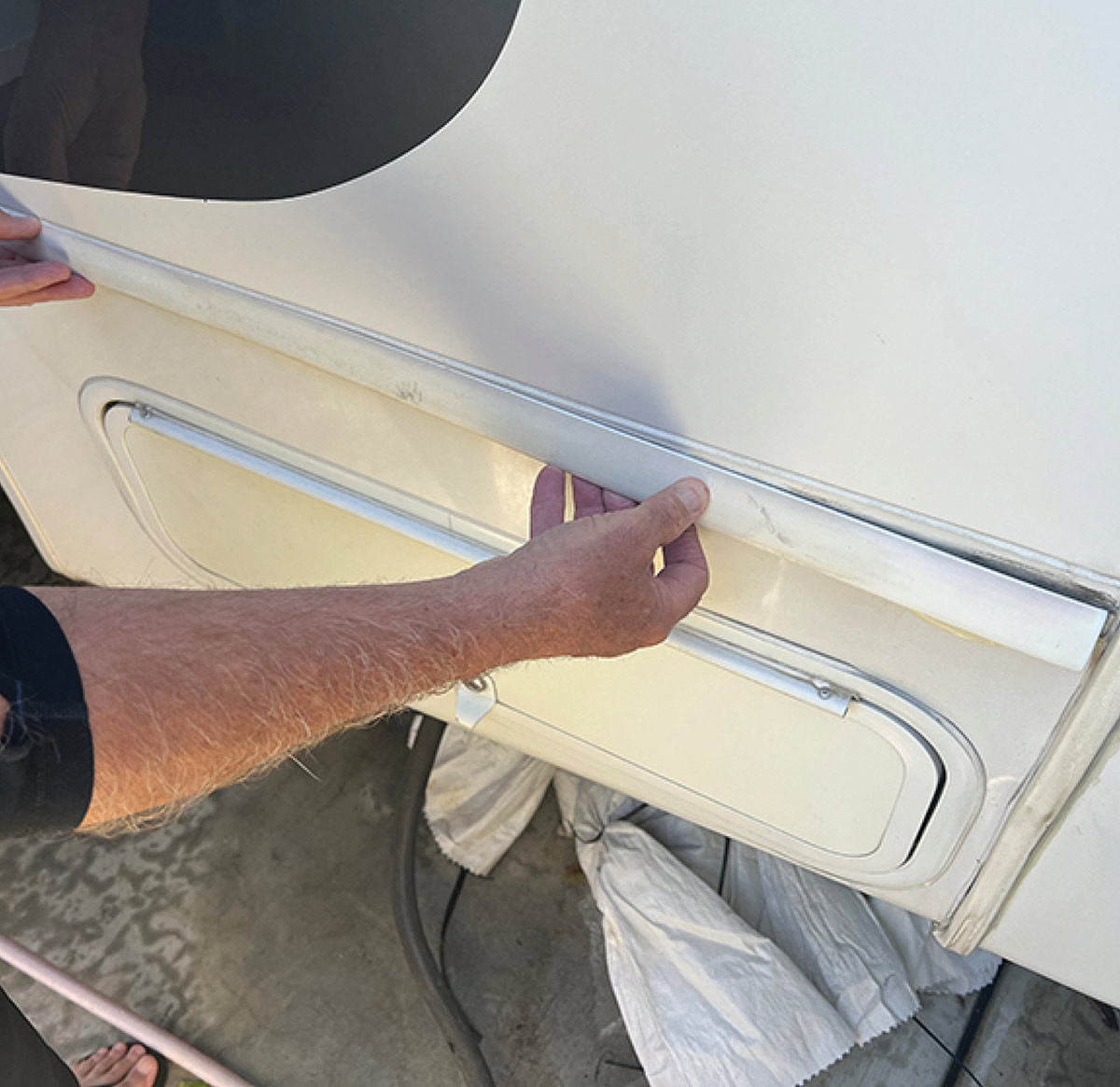
hen the trim molding that conceals the transition between the sidewall and lower section of a fifth wheel started peeling off, it was time to search for replacement material. While it’s possible to find various styles of trim molding, the people who sell this material are very proud of their prices — like, $10 a foot proud. Realizing that the molding was in relatively good shape (only discolored and losing the stickiness of the foam tape), the owner of this 14-year-old Teton fifth wheel made the decision to restore the finish and re-stick the molding to the sidewall.
At first, I chuckled at the owner’s thriftiness, but he’s retired and has a lot of time on his hands, so restoring the finish just meant more time to drink beer throughout the project. A rattle can (spray paint to car buffs and graffiti “artists”) of white paint, some fine-grit sandpaper, a few feet of double-sided acrylic foam 3M VHB tape and a tube of white silicone were acquired at a local home improvement store and on Amazon, and the project was on its way.


never thought that at my age I would have so many electronic gadgets, but the convenience of having these devices is just part of modern daily life — especially for full-time RVers. Heck, I easily have more than a dozen devices that must be charged on a daily basis — and finding enough 120-volt AC power receptacles can be challenging. RVs typically are fitted with multiple duplex-only outlets and some are mounted in less-than-ideal locations, making it necessary to scatter chargers all over the place.
I found an adapter on Amazon that makes it possible to charge all my devices from one location. It’s called a “USB Wall Charger Surge Protection 5 Outlet Extender” but if you search for “Addtam wall charger” you’ll find it listed on Amazon for only $17.95. This product features four USB ports (with one being a USB C outlet), rated for a total of 4.5 amps of charging; three ports provide 2.4 amps, while the USB C outlet is rated for 3 amps. It also has five 120-volt AC power outlets with wide spacing, which come in handy if a higher-power charging module is needed. Surge protection is rated at 1,800 joules, so the need for a power strip is eliminated. Total 120-volt AC current is 1,500 watts.

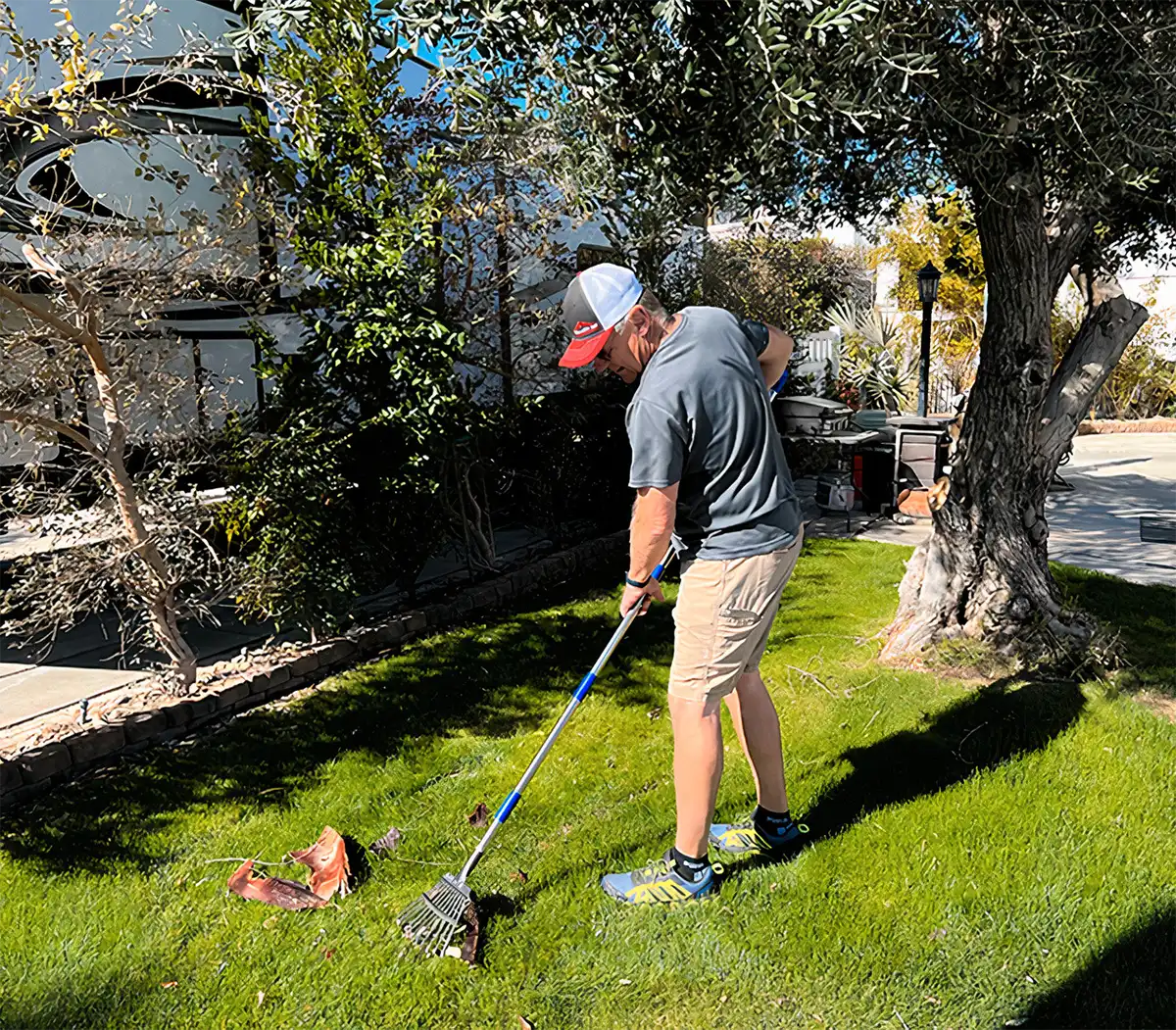
hile nicer parks may have concrete or brick patios, most campgrounds are on the rustic side — meaning that you’ll probably be parked on dirt or gravel, which will extend into the patio area along with maybe a little grass. Park operators normally tidy up the space before you get there, but the weather and environment might counter any of these efforts. Trying to clean the patio and surrounding areas with a broom has its limitations, but for the most part it’s better than nothing.
Using a rake is better, but a bulky full-size rake isn’t something you’re apt to pack. Fortunately, I found a take-apart “deciduous rake” that helps make short work of cleaning up any RV site — and its diminutive size understates its functional ability.


ike most RVers, the search for extra storage space is ongoing in my fifth wheel. Most of the time, space can be freed up by getting rid of unused stuff and rearranging cupboards — but you also need to get creative. Years ago, I added a picture frame to where the television in the bedroom was once mounted to cover up the holes needed to route cables. We never watched this TV, and the picture frame was a nice touch. One day I took the frame down to change the pictures — and it suddenly hit me: there was a huge empty space behind that wall.

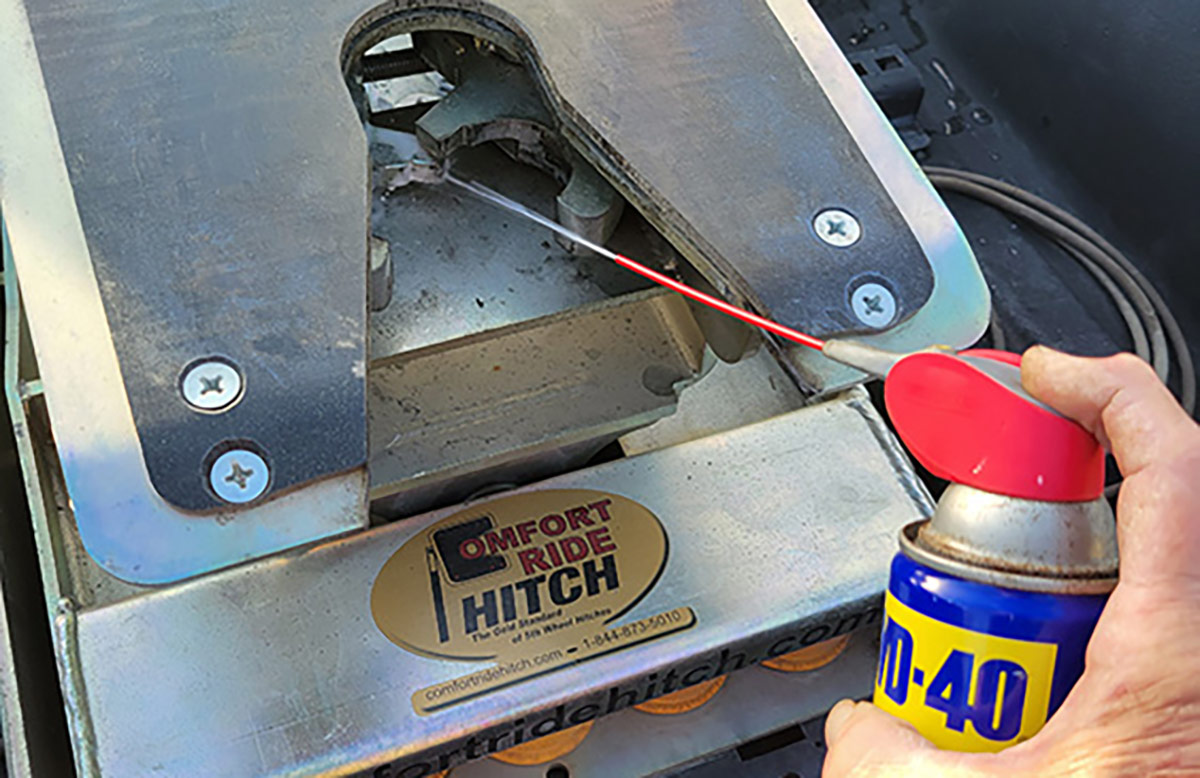
etting back on the road is exciting — or it should be. The anticipation of finally rolling down the highway is only outdone when driving up the onramp with your favorite tunes surrounding the cockpit, whether it be a tow vehicle or motorhome. If you’ve planned properly and made sure the RV is roadworthy, however, you’ll likely experience an adventure with little trepidation. Simply hoping that everything will work via osmosis can get you in big trouble.
Oddly enough, many RVers are fastidious in checking over their RV — but tend to neglect their hitch or tow bar. It’s easy to take the connection point between the tow vehicle and trailer or motorhome and dinghy for granted, but moving metal parts must be lubricated properly to maintain safety and longevity. Here are a few reminders before heading out and expecting that all-too-important vehicle link to “just work like it’s supposed to.”




owing a dinghy vehicle is so popular that you hardly ever see a solo motorhome meandering down the highway. Suitable cars, SUVs and trucks tagging along these days are usually connected by tow bars that slide into the motorhome’s 2-inch receiver and stay there while the dinghy is disconnected. Making the connection to the dinghy vehicle varies among suppliers of tow bars, but fortunately, interchangeability allows owners to make hardware changes without the expense of also swapping out the baseplates or adding a crossbar. Blue Ox, Demco and Roadmaster all offer adapters to cinch up this vital connection when using dissimilarly branded components.



